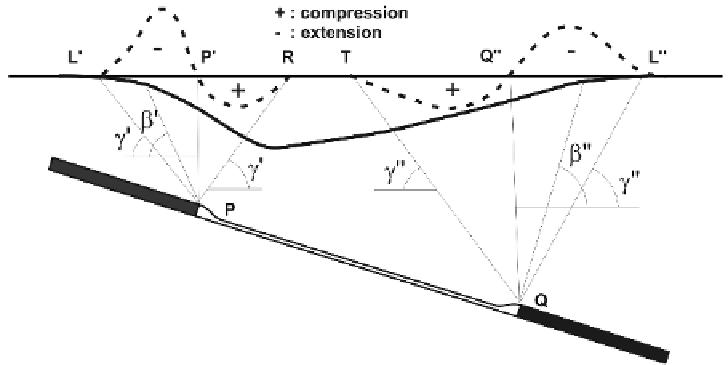Environmental Engineering Reference
In-Depth Information
The envelope surface of the expanded terrains (SE, Figure 7.1) has a concave
shape at the hanging wall and is, to a certain extent, parallel to the stope at the wall.
The surface limit influence (SLI, Figure 7.1), separating the influenced and intact
terrains, is pseudo-homothetic to the envelope surface.
An example of amplitudes of the vertical and horizontal components of the soil
displacements is given in Figure 7.1. In front of the stope, the descent of the terrains
starts slowly (a-b a'-b') and is followed by a brutal settlement (b-c b'-c') that causes a
front of gradient. Behind this front, the motion decreases (c-d-e). The maximum
damages occur in the passage of this front because of the resulting differential
settlements.
The horizontal motions, shortening or elongation, result from the variations in
compression or traction stress.
Subsidence depression due to coal extraction becomes deeper as the extraction
progresses. The evolution of the front of the depression can be computed using
several rules, from the knowledge of the position of the extraction front. Many rules
exist, generally empirical (based on experience), but sometimes more analytical and
even, exceptionally, using finite element methods or similar [WHI 89].
Figure 7.2 presents the empirical computation rule, as commonly used in
practice.
Figure 7.2.
Sketch of subsidence basin caused
by a stope in a dipping layer [LAB 65]

